
No-weld Frame-less Slat Swing Gates
Introduction
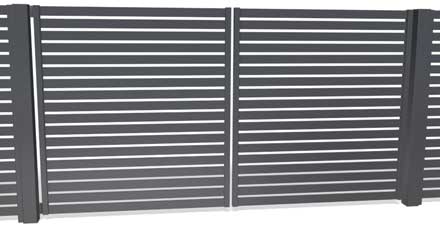
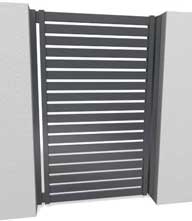
Swing gates fitted with Horizontal Slats can be made without a frame because the slats are screwed directly into No-weld slotted vertical stiles, which provide enough bracing and stiffening of the gate so a top and bottom rail isn't necessary making very efficient use of material. The screws are then concealed with clip on covers given a unique clean look only possible because there are no welds and no screws or gaps visible.
Swing gates made this way are limited in size with a maximum of 1.5m wide x 2m high.
No-weld stiles and aluminium slats may have many different finishes READ MORE
What's included in a No-weld Frame-less Swing Gate DIY Kit
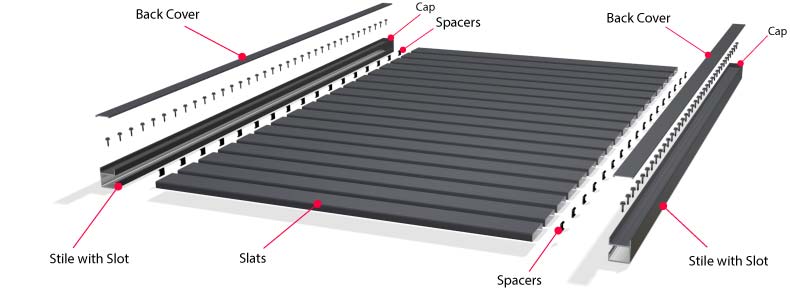
Kits come pre-cut and pre-drilled ready to assemble.
Getting a Quote and Ordering
You can get an instant quote for a DIY gate kit or if there's an installer in your area full installation from one of our Instant Quote pages:
Instant Quote for Pedestrian GateInstant Quote for Driveway Gate
Things to Consider
Slat widths. The most popular slat width is 65mm, there are also 38mm, 100mm or 150mm wide slats all are 16mm thick.
Gate Height verses Slat Gap. No-weld Frame-less Swing gates can have the spacers cut so they fit in the gap between the slats at a precise gap so the slats will fit neatly into a custom height of the gate without the assembler having to work out the spacing. Spacers are only practical from 8mm gaps or wider.
Slats can be hard up against each other too with no gap at all if desired although the exact height of the gate will be determined by the slat count and the exact width of each slat. That is if you want a gate 1500mm high using 65mm wide slats with no gap you will need 23 x slats, which should be 1495mm high although the exact width of slats can vary by up to 0.4mm and the thickness of powder coating can add another 0.3mm or so to the slat width so the gate could be 23 x 0.7m = 16.1mm higher.
Making No-weld Frame-less Swing Gate kits yourself.
If you're in the gate or fence business and want to save money as well as get jobs done faster (customers like it done fast), you can do so by making No-weld frame-less gate kits up yourself. All you need is a good mitre saw, lengths of No-weld framing, slats and hardware. If you keep No-weld materials in stock you could custom make frame-less gate kits up yourself in a matter of hours onsite, assemble them and then install so you don't need a workshop just somewhere to store the material and a suitable vehicle. This will give you a significant edge over your competition both time wise and price wise.
You can order No-weld framing, slats and hardware at the No-weld Online Shop.
Making these gates requires very clean right angle cuts, for technique on how to cut No-weld Framing accurately and cleanly with no burrs see our our page Cutting and Drilling No-weld Framing. There are other styles of gates too see What can be Made with No-weld
Trade Customers
If you become one of our trade customers we can pass work onto you for free for No-weld gates, infill panels and fencing. You can either work as a fabricator only for others to install or as a fabricator and installer. See below on how No-weld frame-less Swing gates are assembled.
For more information see our No-weld for Trade and Wholesale page
Assembly Instructions for No-weld Frame-less Swing Gates

Place the pre-cut stiles on blocks of polystyrene foam or similar material that won't scratch, laid out on a flat surface with the slotted sides facing each other. The open back faces are up and the caps at the same end as each other, which will be the top.
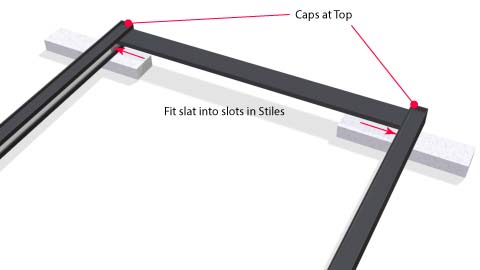
Slide the first slat into the slots of the stiles at the very top, hard against the caps. The slats will fit firmly in the stiles, which helps hold everything together during assembly.
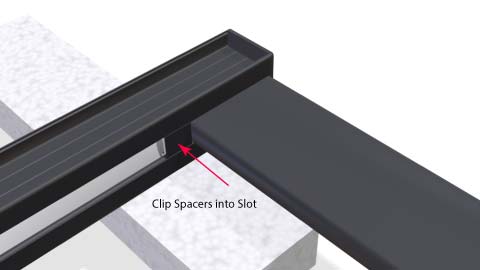
Clip pre-cut spacers into the slot on each side hard up against the slat. This not only sets the gap between slats it also fills the slot in.
See Guide to fitting No-weld Spacers for technique for clipping spacers in.
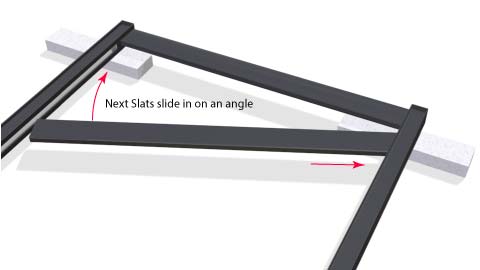
Insert the next slat in on an angle so it will fit in without having to slide it all the way from the bottom hard up against the spacers. Then clip in more spacers, another slat and repeat until all slats are fitted checking the spacing of the slats as you go.
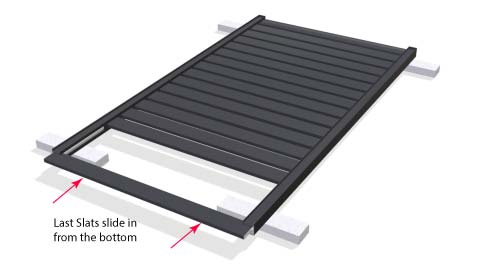
Once you get near the bottom there will be a point where it is easier to fit the slats from the bottom.
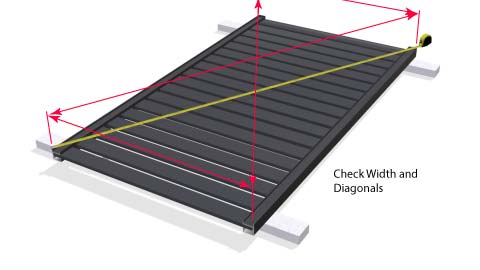
Once all slats are in place check the width of the gate with a tape measure top and bottom and make sure the diagonals are the same, adjust the position of the stiles if necessary to get it correct.
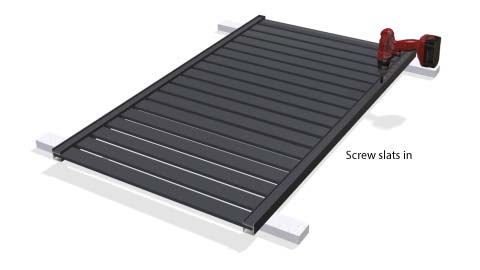
Then screw all the slats to the stiles using a cordless drill from the open back checking the width and diagonals as you go to make sure the gate doesn't loose the correct width and square.

Screws for the slats must be near the edge of the slat, with two screws each end of each slat and in the middle of the frame. Use another block under the area being drilled to prevent bowing of the stiles.
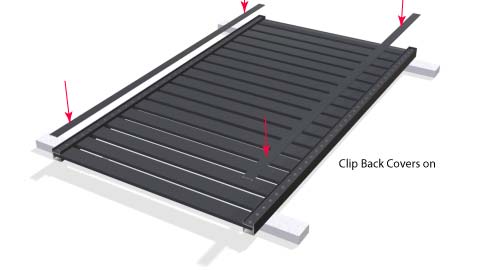
Back covers are then clipped into the back of the stiles to cover the screws.
See Guide to Fitting No-weld Hardware for technique on how to do this.
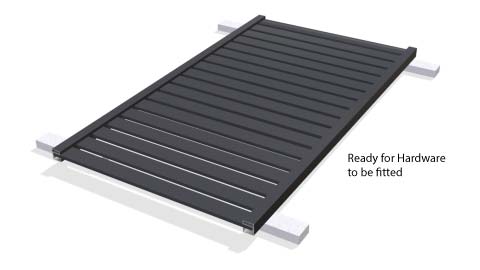
Once the covers are fitted the hinges and latch or stop can be fitted to the back of the stiles. See Guide to Fitting No-weld Hardware.